About Oneness Rods
Maker Bio
About Oneness Rods
Oneness Rods are one-piece 6 foot long hexagon bamboo fly fishing rods (and the occasional Spinning and Spin-Cast Rod). Oneness Rods are ideal for fishing small streams and tributaries for wild native trout. Though are also offered in heavier weight line salt water application rods, and freshwater salmon & steelhead rods, upon request. What makes Oneness Rods truly One-Of-A-Kind is that the taper is unique to that rod. Oneness Rods are not of a single taper design, but are various tapers offered in a specific rod action and line weight, as well as taper designs to optimize a particular fishing application. Oneness Rods are serialized reflecting the taper curve of each rod. And include the Power/Action Angle as measured using Dr. William Hanneman’s “Common Cents System” method. The name Oneness Rods reflects the feeling when fishing a bamboo fly rod. A feeling of wholeness – of being at One with Nature.
Oneness Rods Price List:
- Oneness Rod with Aluminum Rod Tube = $580
- Oneness Rod Only (without Rod Tube) = $480
- Oneness Rods Aluminum Rod Tube = $100
- Oneness Rod Blank (Brown-Toned and Plasticized) = $380
- Shipping and Handling Cost of each = $34
*Note: Maximum Yearly (Seasonal) Output is approximately one dozen Blanks / Rods.
Visit the Oneness Rods eBay Store at the following link:
https://www.ebay.com/str/onenessrods?_trksid=p2047675.m3561.l2563
“Oneness” isn’t just experiencing something; it’s a state of being. A state or condition of perfect harmony or accord, or of wholeness. Oneness is an experience that transcends the mind. To experience Oneness is to feel “at one” with all things.

Maker Bio
My name is Chris Trunko and I’m the maker of Oneness Rods. Born and raised in Akron, Ohio; and is where I still live today. Growing up my mom would take my brothers and me to Myers Island, a branch of the Portage Lakes system to fish for bluegill and bass. I remember enjoying watching fish strike the various insects that I would catch and toss into the water. Around age 8 I began using the colorful wet flies purchased at the local bait shop and fishing them with my 4 foot yellow plastic fishing rod and Zebco push-button spin-cast reel. Attaching a small plastic bobber a couple feet up from the fly enabled casting the fly with some distance, and still fish it dry. I’ve always preferred dry fly over wet or nymph, though I very much enjoy streamer fishing too. Noticing that the fish seem to prefer the live insects over my brightly colored floss and tinsel ribbed wets, I by chance of luck came across a fly tying vise; and with cork, and hair from our dog and found feathers
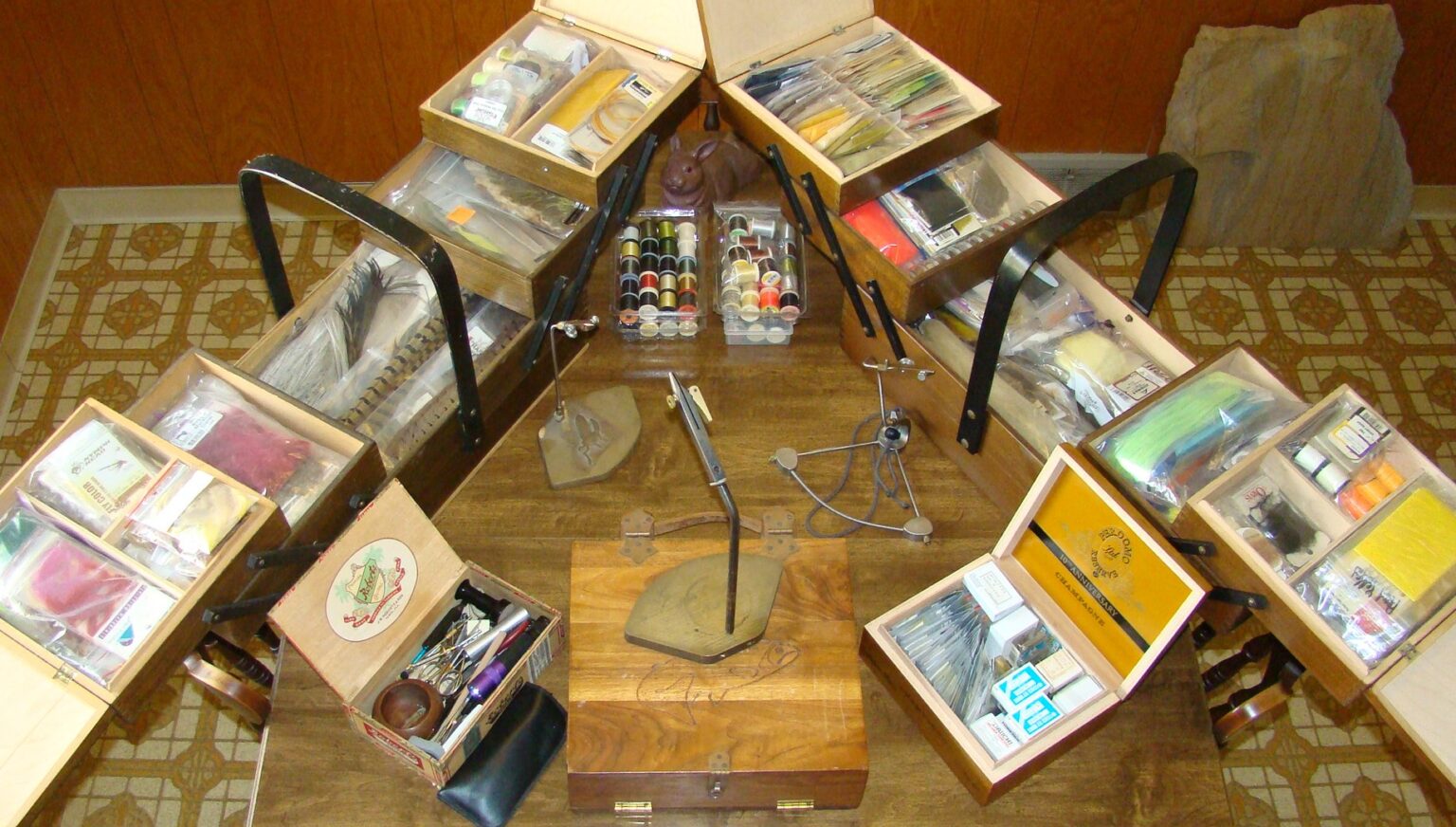
began tying my own flies that more closely resembled the natural terrestrials. And that’s when I began to “match-the-hatch”. It was the year of our country’s 200th birthday and my 12th that while poking around at Manda’s Bait and Tackle Shop I discovered Fly Fisherman Magazine, and on that day bought my first fly rod and reel along with a copy of each FFM in the rack. My soul filled with joy that I could now fish my dry flies! Today that rod and reel hangs on my livingroom wall.
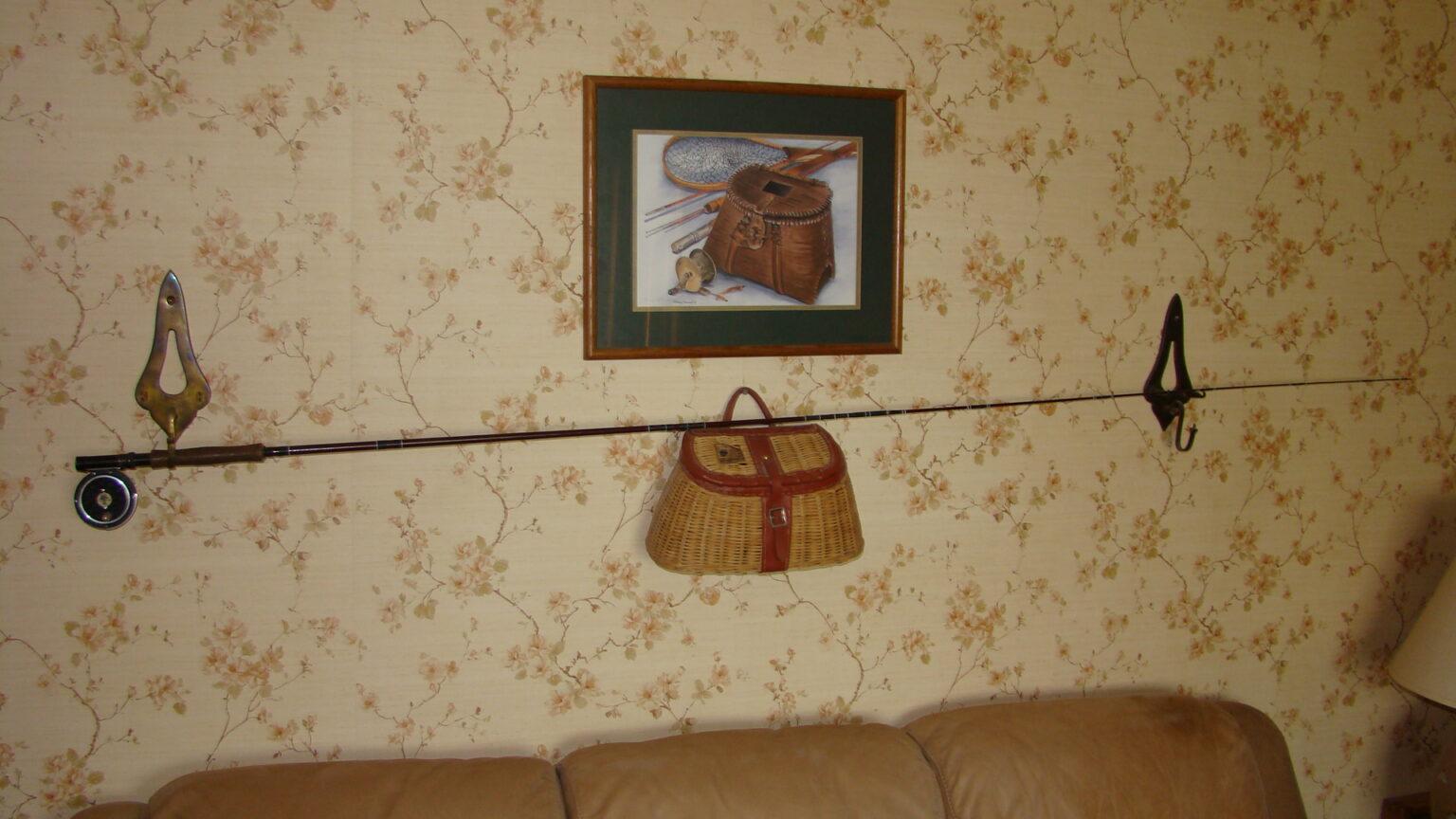
An 8 foot maroon no-name fiberglass fly rod with Pflueger 1494 Medalist fly reel. That same day Mr. Manda showed me a bamboo fly rod, and I truly fell in love with the sight of its magnificence. The following year my father began taking me and my friend who also fly fished, along with him on a day trip each year to Pennsylvania; and would drop us off along a stream in the Allegheny National Forest to trout fish, while he would go visit his retired boss and friend outside of Kane.
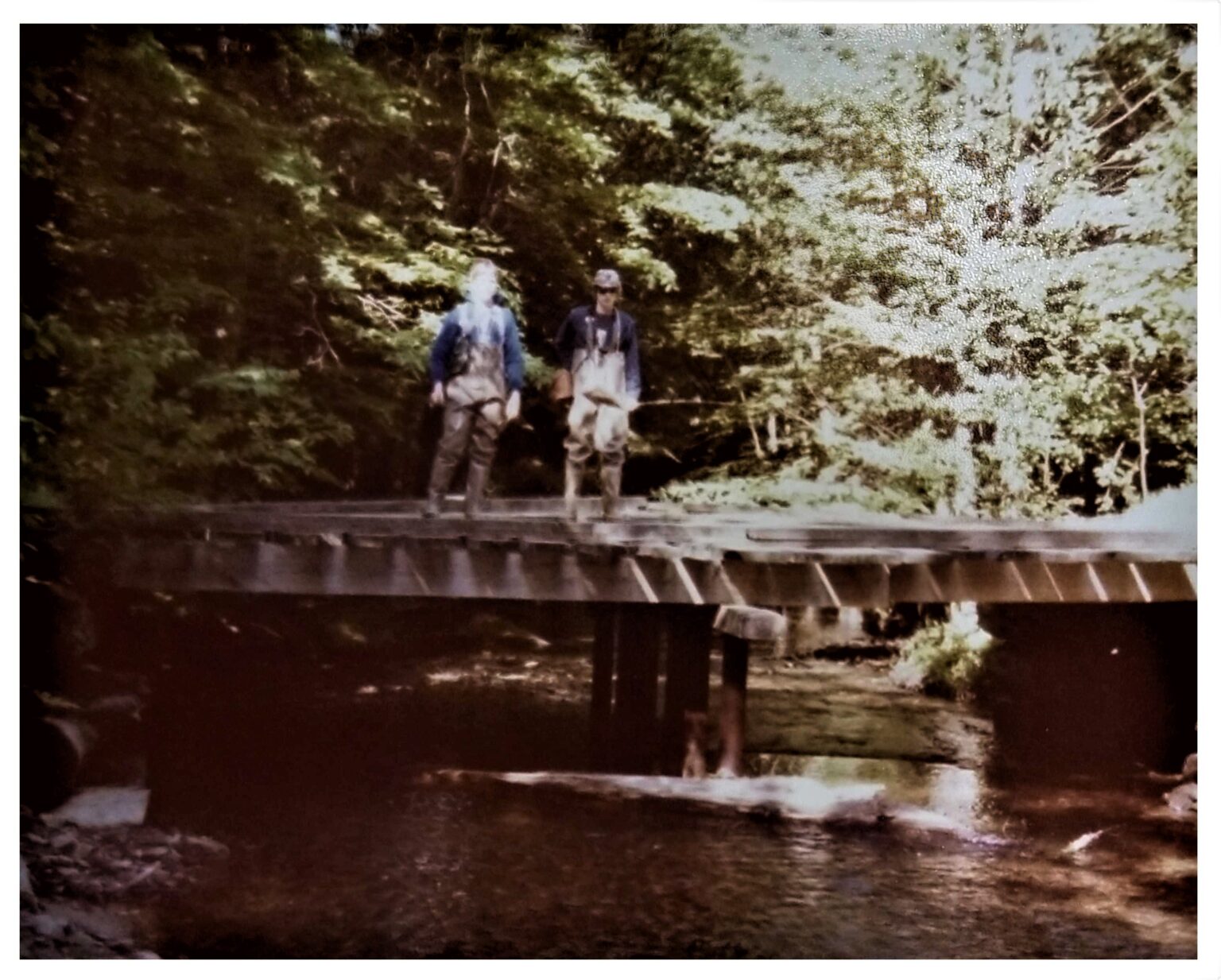
I’m the one with the sun in my face. I caught my first trout a native Eastern Brook Trout on our first trip and was instantly hooked by its electric reaction once it too was hooked. The utter beauty of the Brook Trout with its concentric coloration from sky blue rings centered around radiant red dots and yellowy gold specs melting into a blaze orange belly, and fins tipped the brightest of white; and that distinctive “clean” trout smell left behind on my hand was as though a whole new world had opened up to me. I always say it’s as though the brook trout is looking right back at you. I share all of this with you because I know everyone has their own story, and this one’s mine; and so you’ll have some background on the maker of your Oneness Rods. For my 16th birthday my parents presented me with my first bamboo fly rod. A 9 foot 3/2 Heddon Deluxe #35 that became my rod of choice.

Around the same time after reading Izaak Walton The Complete Angler I began fishing that rod with a Pflueger Progress #60, and with much success too. Over the years my father and I continued to go and explore trout streams of north-central Pennsylvania on our own. Kettle Creek and Pine Creek, and their tributaries were among our favorites. I would go off fly fishing and he preferred to stay behind at the truck and read a book or nap. We’d end the trip with hot pork or turkey open-face sandwiches at a nearby diner or bar, and share our experiences of the day before heading back home to Ohio. Those were wonderful times – he was a wonderful dad! Once I got my drivers’ license I also purchased a Howard Higbee Stream Map of Pennsylvania. An absolutely wonderfully invaluable map for a
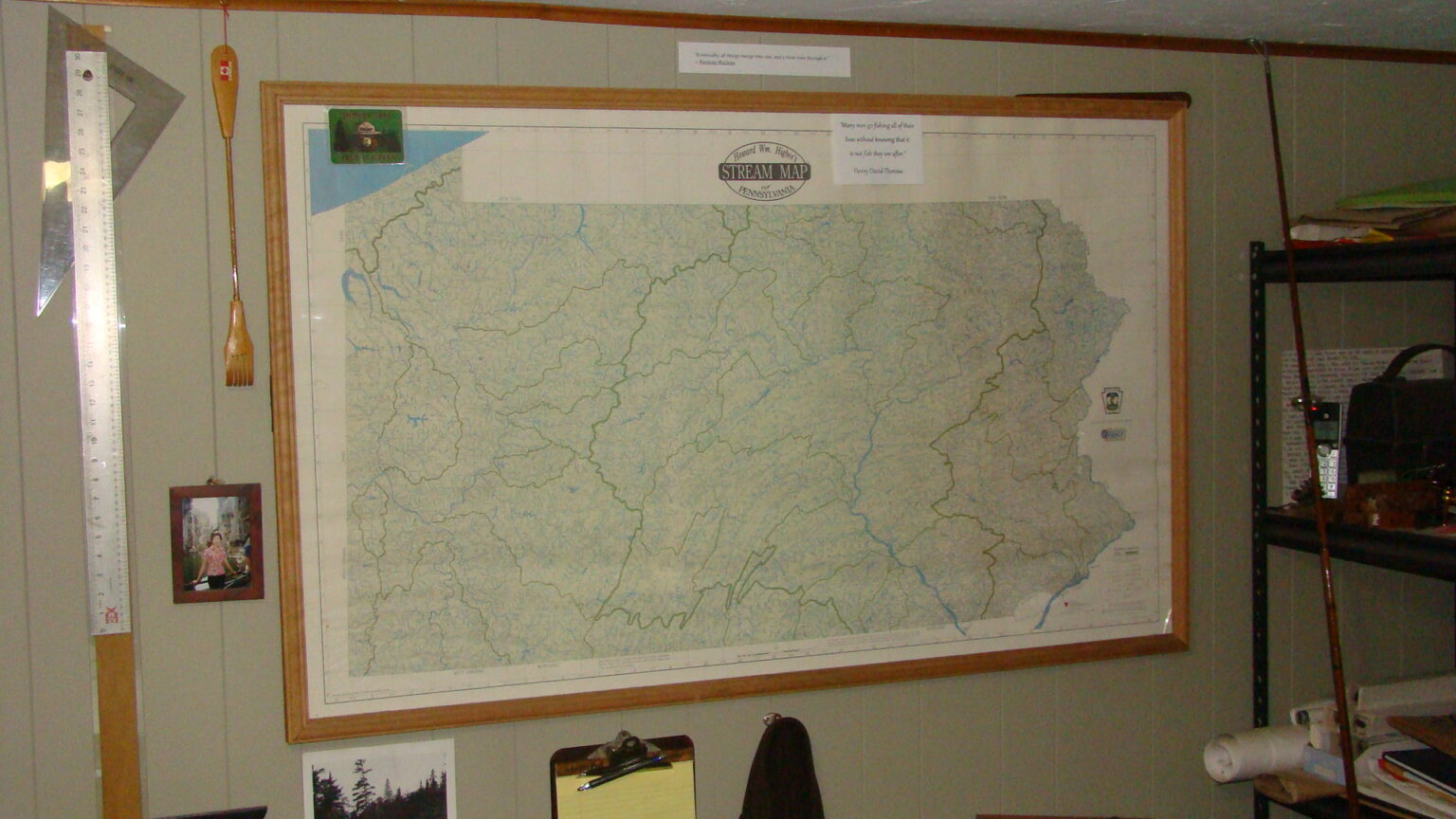
fly fisher! Comparing the Stream Map to State Forest Lands and road map I would plan my weekend fly fishing excursions exploring new waters around north-central Pennsylvania. I’d park my Plymouth Horizon off the side of the road and post the Pennsylvania primitive camping parking permit in the windshield, and go off fishing for the day staying overnight along the stream; usually just sitting in my waders with back against a tree for the night. For more than a decade throughout my twenties I’d plan these annual excursions for a few weekends in April and May before the biting bugs were in force. Leaving work Friday I would drive straight through, and fish Saturday and Sunday, then head back home after a hot meal nearby to get up Monday morning for work again. Those too were wonderful experiences that taught me a great deal about fly fishing for trout and about Nature, and how to prepare for such overnight excursions. My fondest memory which has gotten me through many stressful times in my life is the thought of during the heat of mid-day sun I’d take a break from trout fishing to peel back my wool shirt and roll the chest waders down waist-high for the remainder of the day, and enjoy an apple and some walnuts while just sitting low along the stream watching trout feed, and simply being at one with Nature. And there was always a chickadee nearby to sing its song. No matter where you spend your time in Nature in this beautiful country of ours there’s always a chickadee singing there too. I often thought of the quote by Henry David Thoreau, “Many men go fishing all their lives without knowing that it is not fish they are after.” During those trips I’d fish an early Orvis 7 foot graphite rod with Pflueger 1492 Medalist,
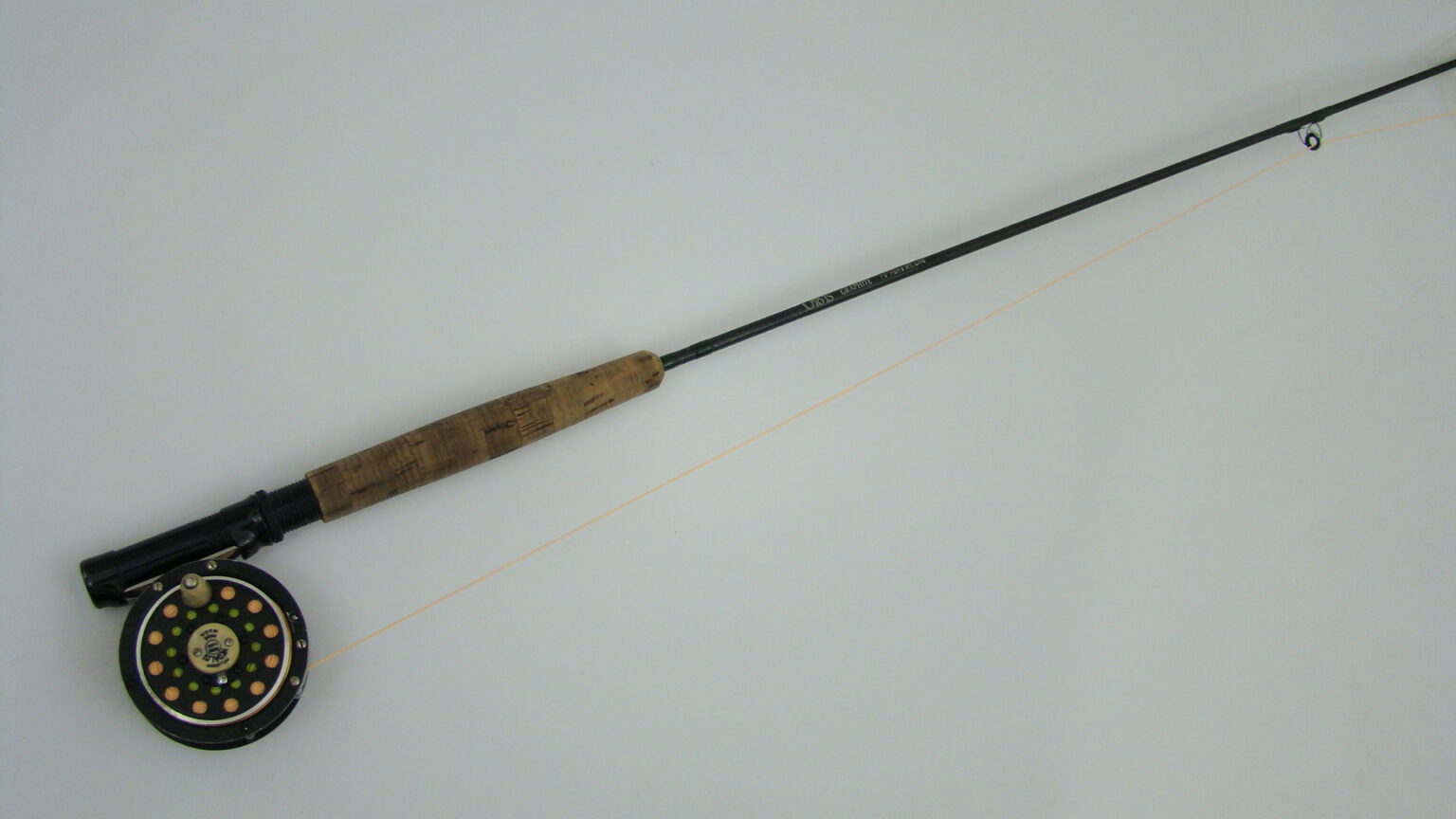
which was sufficient as I had read how my fly fishing idol Lee Wulff liked to fish a 6 footer, even for Atlantic Salmon. And a quote of his which got me to begin fishing Catch-and-Release early on, “game fish are too valuable to be caught only once.” Once I discovered the ferrule design of a graphite rod I switched over and put away my 9 foot bamboo Heddon Deluxe as I always felt tense fishing metal ferrules, and when having hooked a substantial fish that uncomfortable feel as my bung puckered at the sight of those dead zones of the flexing rod. And though that feeling went away so did a feel that I couldn’t quite identify. That special feeling when fly fishing bamboo. There’s a unique sensitivity of a bamboo fly rod that you can almost feel the fly rolling along ripples of the pool, and how with the tiniest of midge imitations the hookup is sure as is the expected direction of the darting trout felt in the palm of your hand. And a feeling of wholeness – of being at one with Nature. I had often imagined how it might have felt fishing a one-piece bamboo fly rod during those trips to Pennsylvania. So I now solely make one-piece six foot long hexagon bamboo fly fishing rods for those seeking this same special oneness with Nature.
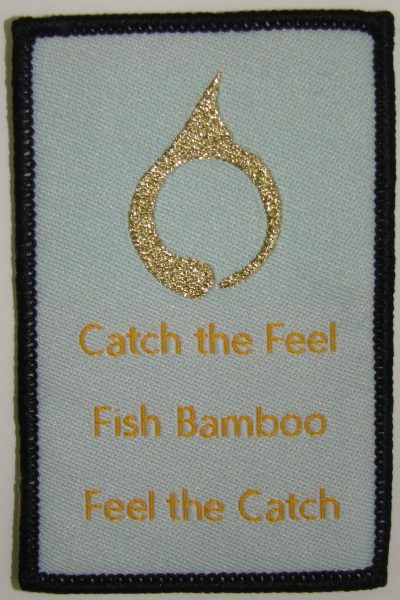
What started me making one-piece bamboo fishing rods was the yearning for my purpose in life. And remembering a quote by Red Skelton that, “if God gives you a Gift and you use that Gift that’s your Gift to God.” Researching over the years on how to find your purpose in life I happened to read that your earliest interests is likely what you should be doing in life. I could only think of one area of interest and it revolved around fly fishing and tying flies, and Nature; which I believe all brings us closer to our creator. Then years later after seeing the movie “The Bucket List” I realized that the first thing on my list would be to make a one-piece bamboo fly fishing rod. And not just a fly fishing rod, but among the very best of fly fishing rods! As this must be my Gift! So I began reading and researching everything I could find on the fine art of making a bamboo fly rod. And was especially drawn to the idea of how a bamboo rod’s varying taper along its length could influence the performance of the rod. I wanted to understand more about taper profile, and design the very best fly rod taper for Oneness Rods. Only to later discover that there are a number of rod taper combinations that I prefer, and not just one. In order to get a true comparison of the different rod tapers the base rods specifications and fabrication must be as close to identical as possible. I decided that all Oneness Rods would be one piece fishing rods; and 6 foot overall length. Six foot is a manageable one-piece length, and ideal for the trout streams which I’m familiar. Plus, Lee Wulff fished a 6 foot fly rod. Nuff said. And so a one-piece 6 foot long hexagon taper bamboo fly rod with the same quantity and size range of black nickel guides and tip-top, and old-school black anodized aluminum double nut down-locking reel seat with rubber winding check is the Oneness Rods specification. Although placement of the last couple snake guides prior to the tip-top may vary depending on the arc of the flexed blank. Next was to develop a process that I believe generates the highest quality hexagon bamboo fishing rod blank. And through much trials and lessons, and testing upon testing I’ve developed the standards I use today for all Oneness Rods made. Standards with an aim that Oneness Rods are to be fished well and often, and the feel of fishing an organic material fully experienced. When fishing bamboo the guides may not always be in perfect alignment, or a slight set might develop along the tip of the rod; yet still the feel of Oneness Rods one-piece bamboo fly rod when cast, and once the fish is hooked, is unsurpassed. I have done numerous tests casting rods with bends to find that a tip zone set must be rather severe before it affects the performance of the rod. I believe it is merely appearance and usually does not alter the detailed casting and presentation of the dry fly.. at least with my ability casting the fly line.
Respect wild native trout – fish bamboo